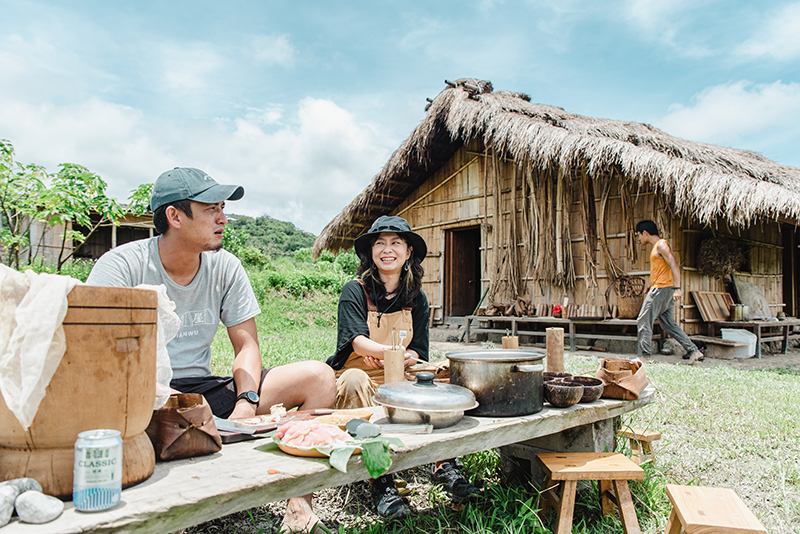Many wild vegetables that grow along rural roads are delicacies on the Amis table, prompting some to joke that the Amis people “love to eat grass”. There is another saying, “the Amis enjoys bitter tastes” because most wild vegetables taste rather bitter. The most common way to prepare wild vegetables is to put them in soups, add protein or some wild spices for seasoning and you have a nutritious meal. Follow Akac Orat as he walks around the family home in search of wild vegetables and ingredients for his hot pot!
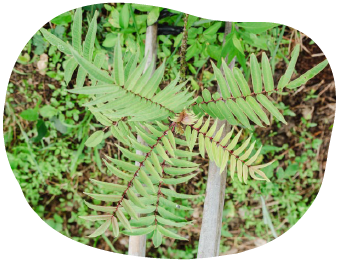 Alianthus Prickly Ash
Alianthus Prickly Ash
If you can’t find ginger for your fish dish, use Alianthus Prickly Ash instead. The leaves are sun-dried and then ground into a powder. Add salt into the powder and you have the indigenous version of salt and pepper. Remember to break the top end of the branches when harvesting Alianthus Prickly Ash or the plant will grow tall and lose its flavor.
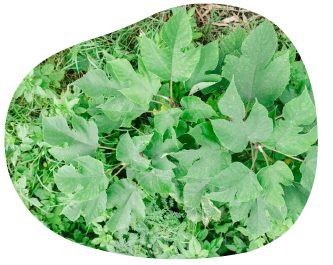 Common Paper Mulberry
Common Paper Mulberry
Also known as “deer tree” as it was once used as deer feed. There are female and male paper mulberry trees and the male trees grow small flowers. The Amis usually eat the leaves of the male trees.
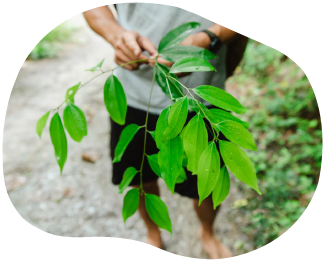 Cinnamon
Cinnamon
Don’t consume too much of this plant as it is slightly toxic. One to two leaves should suffice when cooking. Cinnamon leaves release oil when rubbed. Apply the oil to your forehead to make yourself more alert and awake.
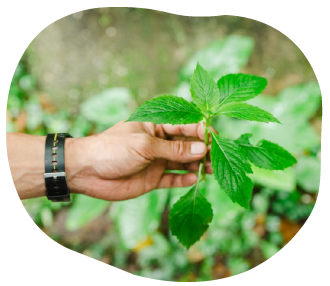 Fireweed
Fireweed
Commonly known as Shōwa grass in Taiwan because its seeds were scattered from Japanese planes during the Shōwa era.
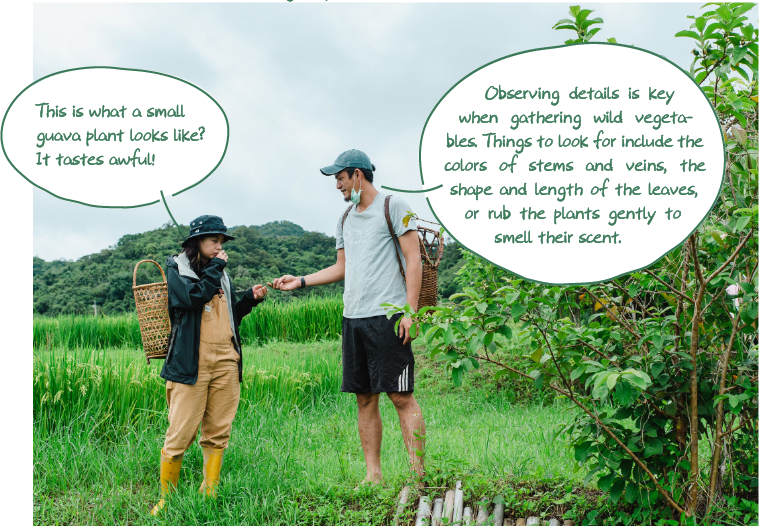
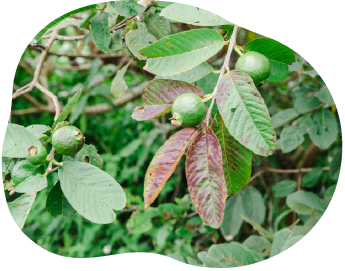 Guava
Guava
Its leaves can get rid of mucous membranes. Eat one or two leaves when you have gastroxia or diarrhea problems.
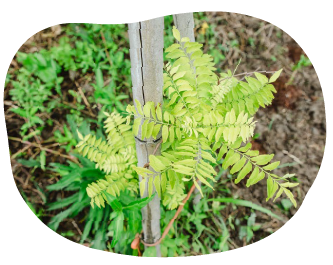 Taiwan Wampee
Taiwan Wampee
A plant that tastes similar to star anise and is often used to make wine. Rub the leaves for a unique scent!
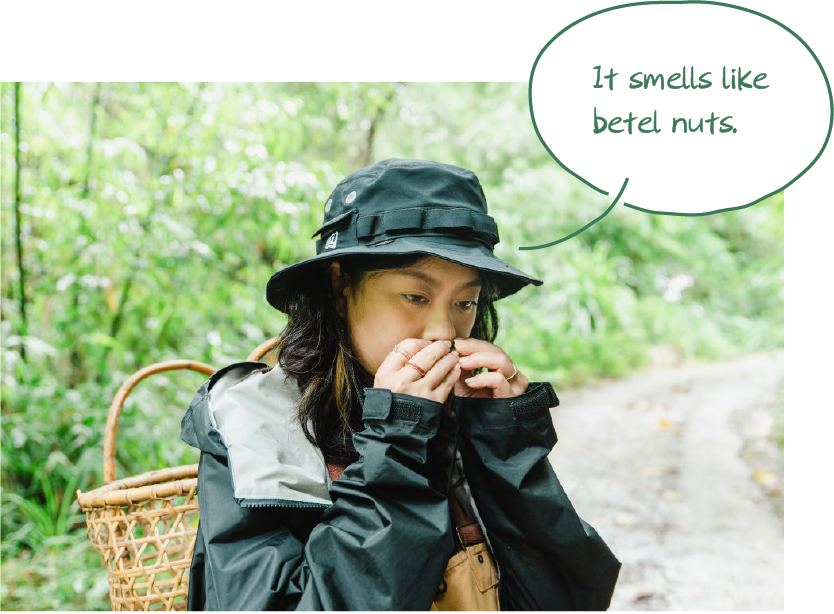
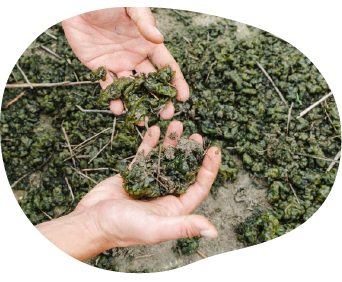 Witch’s Butter
Witch’s Butter
This type of gelatinous fungus is typically known as “lovers’ tears”. It appears in clean areas when it rains. Highly nutritious, it is regarded as “the treasure in the rain”. Remember to clean it thoroughly though!

 The act of picking wild vegetables is like birds eating plants in the wild. Fruits fall off the plants and new ones grow again, maintaining the sustainability of the environment. We used to be able to find more than a dozen different varieties of wild vegetables, but now only fireweed and black nightshade are more common. Exotic birds that migrated here have disrupted the local food chain, unfortunately.
The act of picking wild vegetables is like birds eating plants in the wild. Fruits fall off the plants and new ones grow again, maintaining the sustainability of the environment. We used to be able to find more than a dozen different varieties of wild vegetables, but now only fireweed and black nightshade are more common. Exotic birds that migrated here have disrupted the local food chain, unfortunately.
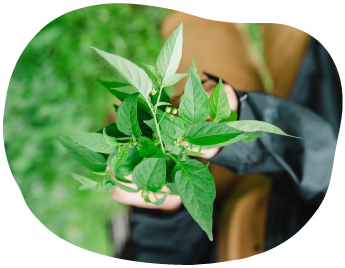 Black Nightshade
Black Nightshade
This plant only grows in wintertime. It’s great for porridges because it can be boiled for a long time. However, the fruit is slightly toxic and may cause diarrhea if you consume too much.
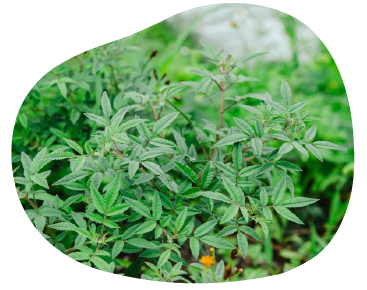 Lemmon’s Marigold
Lemmon’s Marigold
A type of aromatic plant that can be made into tea and wine. The Amis people use about twelve kinds of plants to make wine. The fruit of Yellow Rotang Palm can also be used to make cocktails.
 Taiwan Fig-tree
Taiwan Fig-tree
Its roots can be used in chicken soup.
 Sama
Sama
Also known as Wild Lettuce, this plant has a very bitter taste. It can be used in dishes, soups, or brewed into tea. Pick the tender leaves only, the older ones are not good for eating.
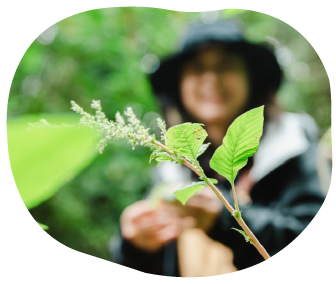 Slender Amaranth
Slender Amaranth
Its leaves can be used in soups.
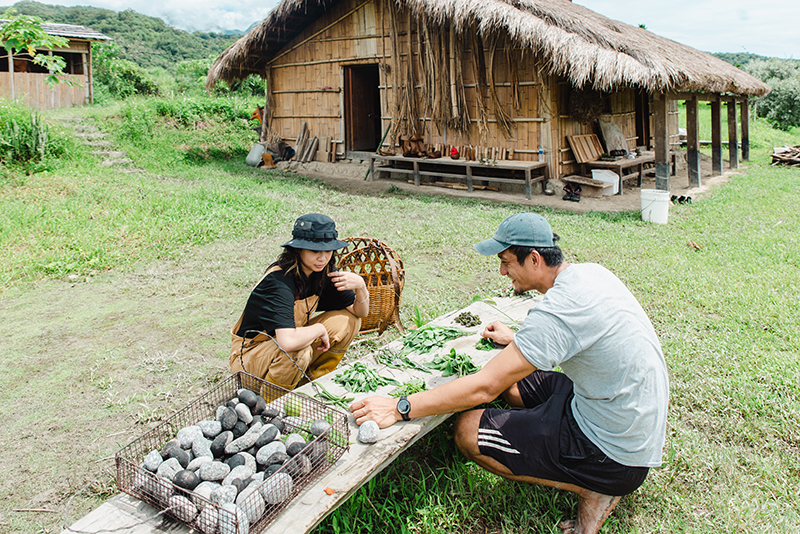
Can you still recognize these greens after sorting them back home?
The Stone Hot Pot Really Has Stones In It!
Unlike the enameled cast iron pots used in hot pot restaurants, traditional Amis stone hot pots require a Maifan stone that is burnt to a high temperature and then placed into a betel nut leaf sheath container filled with food. The high heat will boil the soup and cook the food. This cooking method was created in the past when the Amis people used whatever resource they could find by the river to conduct Pakelang. There is a lot of andesite in the eastern part of Taiwan and our forefathers found that the stones came in handy when cooking, and thus this method was passed down.
Porphyritic andesite, commonly known as Maifan stone, has water filtering features and does not crack easily under high heat.
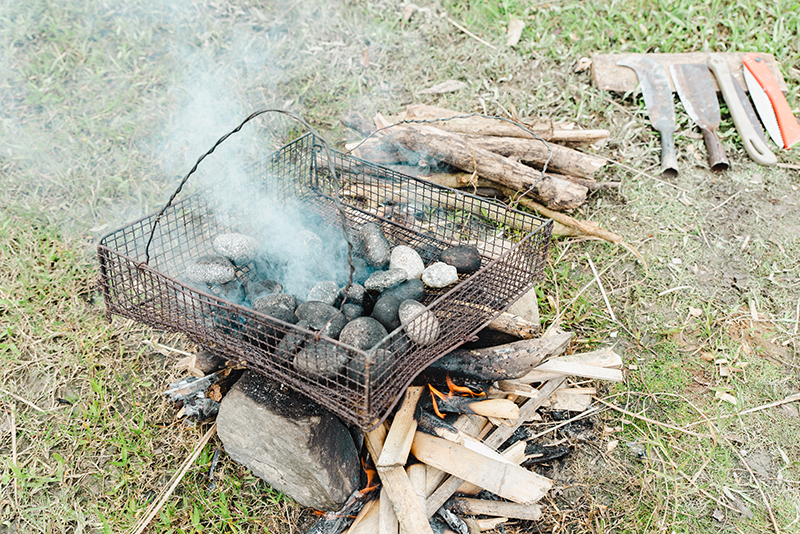
Traditionally, the Amis people will set up a cooking stove with three large rocks. This is called a Parod (“stove”).
The stone gradually loses its high heat in the soup, so we have to continuously reheat the cooled stones in the Parod. The process has to be repeated a couple of times until the food is thoroughly cooked and can be eaten. “The stone hot pot is a piece of Amis life wisdom. In the past, a meal mostly consisted of rice and soup, and preparation methods were simple. This allows us to taste the original flavors of the food and adding spicy wild vegetables can bring out the flavors even more,” explained Akac Orat.
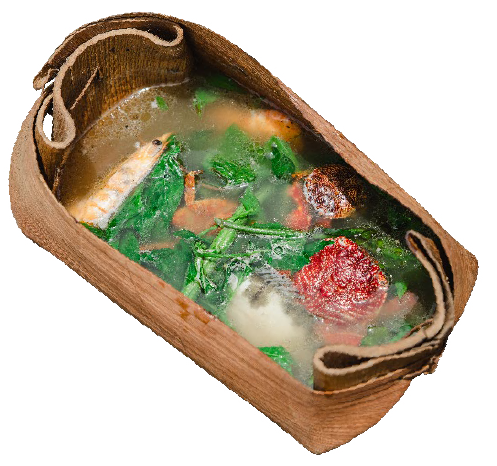
Early indigenous peoples used fallen betel nut leaf sheaths as containers. The leaf sheaths are flexible and become soft and malleable after being soaked in water. The dried leaf sheath is hard, durable, and easy to keep.
When our ancestors prepared stone hot pots by the river, a pot of raw food and ice-cold river water usually needed at least twenty stones to ensure the food was thoroughly cooked.
 Indigenous peoples are not natural historians and knowing more doesn’t necessarily mean you are better. There are a lot of things in this world that you need to learn through your body and experience. Take rattan cutting for example, the point isn’t about learning about the knife, it’s about learning how to use your hands and body. Once your body learns the rhythm and feel of the task, it becomes easier. It’s not that we refuse to use tools that make the job easier, we wish to let everyone learn more about the spirit and culture of the land through our traditional ways.
Indigenous peoples are not natural historians and knowing more doesn’t necessarily mean you are better. There are a lot of things in this world that you need to learn through your body and experience. Take rattan cutting for example, the point isn’t about learning about the knife, it’s about learning how to use your hands and body. Once your body learns the rhythm and feel of the task, it becomes easier. It’s not that we refuse to use tools that make the job easier, we wish to let everyone learn more about the spirit and culture of the land through our traditional ways.
